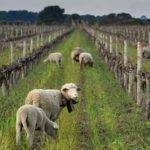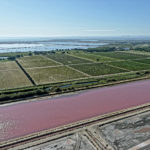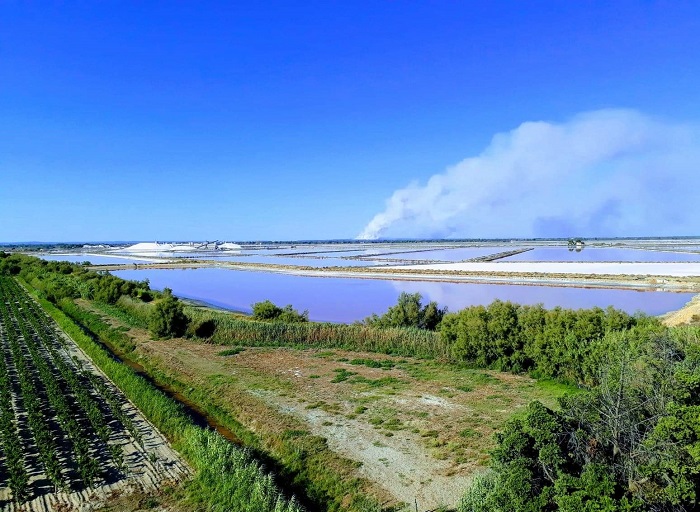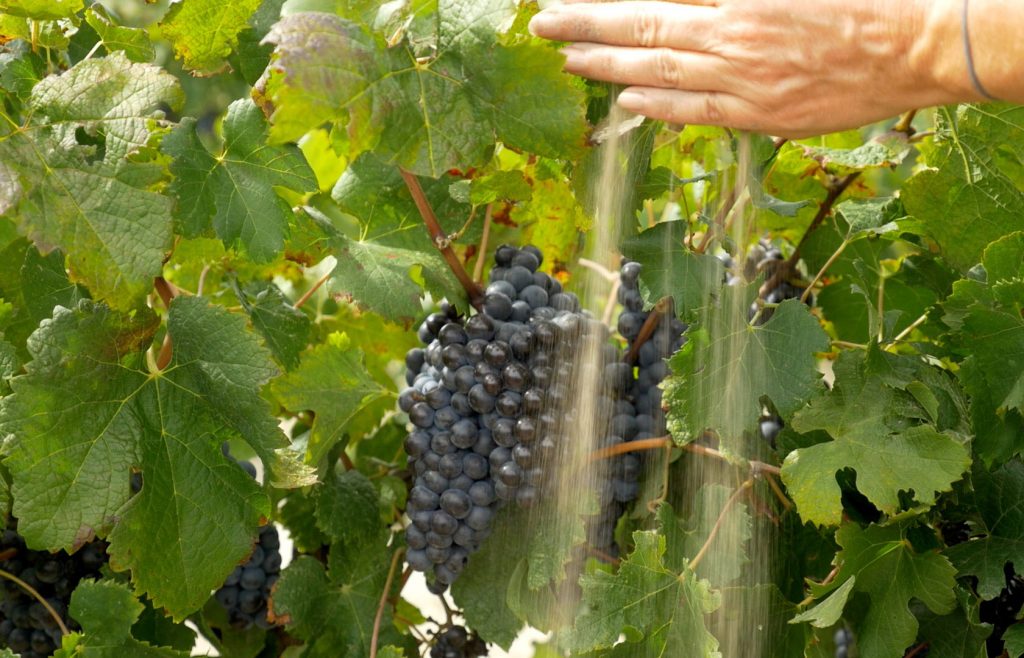The Terroir
An Exceptional Terroir between Sea and Ponds
The vine is cultivated on Rhodanian sand dunes,on sea sand and sand coming through the wind.
The landscape is unique between lagoons and salt marshes.
The biological diversity of the environment is exceptional: more than 1000 species of flora and fauna are listed.
The sand is very homogeneous, at least 90% is almost free of clay and silt.
The marine influence is very marked.

Outstanding environment & exceptional growing method
In order to protect the sandy soil from wind erosion, the vine growers must establish a vegetation cover in during non-vegetative periods. From April to November, the foliage of the vine naturally protects the soil from the wind.
At the end of the harvest, the winemakers sow cereals so that the plant cover benefits from the October rains of October and so that it might be well in place in November when the vine folliage falls. To avoid excessive growth, herds of sheep regularly graze there until budbreak. At the end of April, the grain is crushed and buried in the sand.

A Unique Know-How
The cultivation of the Little Camargue has been a necessity since the 12th century: drainage and sanitation of this initially salty, wet and regularly flooded environment.
- Development of a soil level of cultivation located between 1m and 1, 20m compared to zero NGF(zero M FOD (meters French Ordinance Datum-the general depth of soil in France )
- Maintenance of hundreds of kilometers of roubines (canals dug and arranged by humans present all around the plots) that are used for water management.

Phylloxera and ungrafted Vines
From 1863, the parasitic aphid responsible for the phylloxeric invasion destroyed almost all the vineyards (Camargue, and France).
However, the terroir of Sable de Camargue has natural characteristics that prevent the presence of phylloxera: the sandy texture prevents the formation of galleries colonies galls.
Thanks to this remarkable originality, our terroir has many plots in which an exceptional vine thrives: the ungrafted vines
In addition to the historical and patrimonial interest of this national exception, the ungrafted vine has singular characteristics and produces an exceptional wine.
The vine stock is better fed with nutrients specific to the terroir, favoring the minerality, the complexity and the expressivity of the wine.
These so-called “pre-phylloxera” vines, witnesses of a vineyard and a historical tradition. They produce an uncompromising gris de gris wine.
Thanks to the ungrafted vine, the Sable de Camargue terroir has created an exclusive wine, a wine of yesteryear, which typicity is based on unique, local and constant soil characteristics.

Management of Water and Salt
Salt is a chemical barrier to the water supply to the vine and the extension of the roots.
The water table is about one meter deep, it is significantly salted to a great depth.
A fresh-water lens a few centimeters thick floats on the salty tablecloth.
The vine draws its water supply.
The good management of this freshwater lens is vital for the good health and sustainability of the vineyard, it is the role of the roubines.

A very Original Environment with Strong Typicity
A sanctuary for the vine,
with poor, superficial thin surface and highly permeable soils
with strong winds that sometimes carry salt spray
with a random availability of freshwater characterized by:
- the risk of saline toxicity and root asphyxia,
- the risk of desiccation in summer

Environmental initiatives are being carried out by the producers of PGI Sable de Camargue.
Thus, we can highlight that the Grands Domaines du Littoral, their grapegrowers and the Sabledoc Cooperative are engaged in a HEV (high environmental value) initiative. Some areas of the Grand Domaines du Littoral are operated Orgnanic.. All of the private cellars and their vinegrowers are also operated organically.

